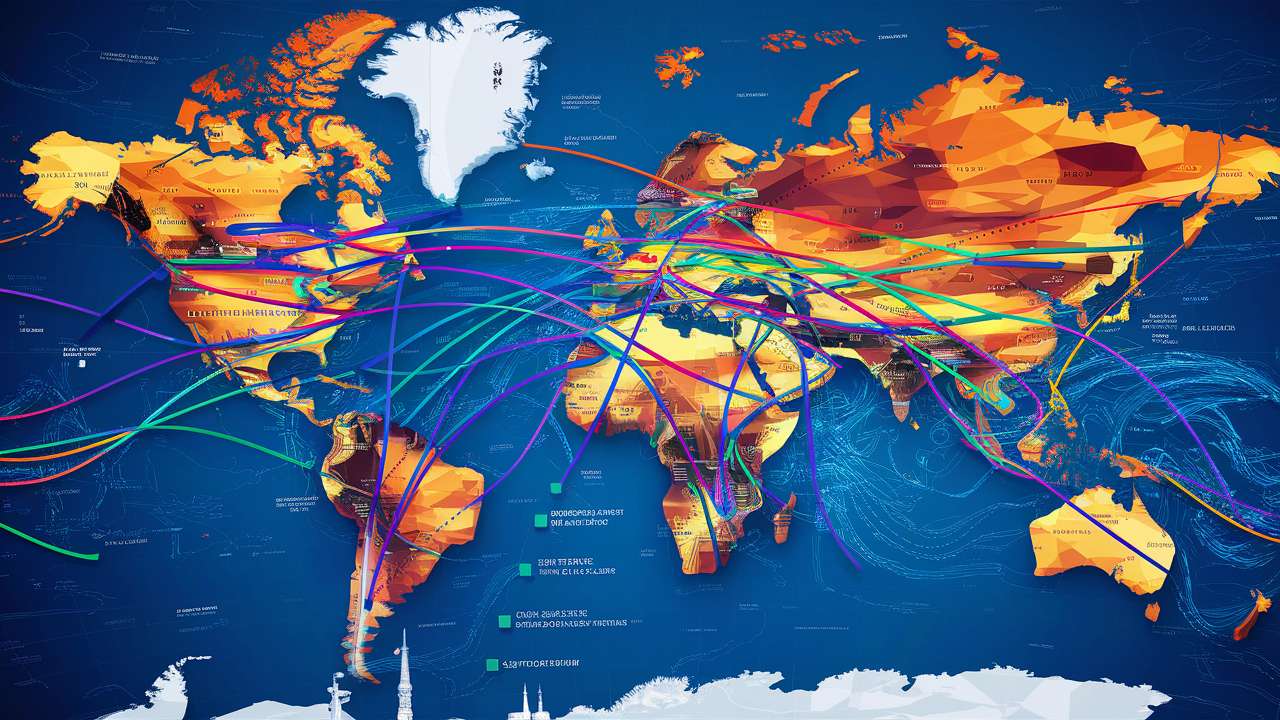Which airline has the most travel destinations?

Where can I find an answer to the question of which airline flies to the most destinations?
When it comes to air travel, most travelers have their needs met by offering them means of transport that will get them to their desired destinations in the shortest time possible, with comfort, and at an affordable price. However, these regular travelers are often likely to be more concerned with the routes of an airline and the number of places it connects them with. Having more options of direct flights as opposed to multiple connections can be a lot of time-saving. Mile accumulation also contributes to the picture since customers of regular flights aim to have their miles redeemed for flights to as many destinations as possible. Thus the question: "Which airlines in the world take passengers to the largest number of destinations?
By the Numbers
As of 2022, American Airlines is the airline with the most airport destinations on its network. From its base in Charlotte, Chicago, Dallas/Fort Worth, Los Angeles, Miami, New York-Philadelphia, Phoenix, and Washington, D.C., American runs flights to more than 350 locations across 57 countries around the globe.
With more than 300 worldwide stations in 52 different countries, Delta Air is the second biggest airline. Delta runs some of the important gateways from Atlanta, Boston, Detroit, Los Angeles, Minneapolis/St. Paul, New York, Salt Lake City, and Seattle as the four probable sites for the headquarters.
Using its primary gateways in Chicago, Denver, Houston, Los Angeles, Newark, San Francisco, and Washington, D.C., United Airlines occupies the third position with a network spanning around 280 destinations on five continents.
Other airlines with large network coverage include Air Canada with a reach of around 220 locations, Lufthansa with roughly 210, Air France with roughly 200 destinations, British Airways reaching more than 180 destinations, and Turkish Airlines covering almost 300 destinations.
The Hubs Strategy
About this, what makes it possible for an airline to provide service in so many different locations? It is in the structure we call the hub-and-spoke model. Major carriers run several hubs, often referred to as focal or central airports, at which planes and passengers are assembled to connect with other flights. For instance, Atlanta is the primary focus city for Delta, with over 1000 daily flights. People traveling from cities such as Chattanooga, Knoxville, Savannah, and other regional cities to connect with the rest of the country and sometimes even the world do so through the Atlanta hub of Delta's network. Depending on the hubbing strategy, airlines can move people across the extent of the maps they have set up. They also engage in strategic cooperation and connect with other airlines to expand their networks.
Flying to a particular city with a stopover is sometimes not as convenient as flying directly to that city if one is traveling from one point to the other directly. But this is where hubby comes in, as it is the strategy that allows an airline to connect several small cities that would not have the demand and traffic to support a direct flight in all the markets. But when using a hub, one can select the connecting times that are reasonably convenient to make the airport transfer disruption bearable.
Considerations for Frequent Flyers
Frequent flying business travelers feel very keen about non-stop flights since with each connection point, you are essentially adding time to the overall airport experience. Also, the elite status flyers will look at the route connectivity of an airline in terms of the options available to them when they want to redeem their frequent flyer miles. The need to be informed about flights that are commonly taken or the dream exotic trips makes a program less valuable if it doesn't provide that.
However, when selecting an airline company, first we need to consider the whole route map. For instance, do they offer direct flights to most of your frequently visited cities? What about places that you would like to visit but have not yet? A connection-rich airline such as American, Delta, or United can connect you to a broad number of domestic destinations in addition to some of the most significant international cities. Whereas, regular travelers select the airlines that will help them reach their destinations with as many stopovers in between as possible.
The Takeaway
If one counts up the destinations, then the flight service provider that stands out as the winner is American Airlines, which provides its services to more than 350 airports in the world. Both Delta and United Airlines also have extensive domestic and international flight networks that provide passengers with access to more than 300 destinations worldwide. Larger carriers depend on the development of hub airports to consolidate traffic and to move customers effectively to the highest number of destinations. Thus, the choice of an airline may be defined by its geographical network since frequent flyers interested in nonstop flights, open schedules, and valuable redemption options should be taken into account. The one that can help you search for the highest number of destinations you wish to travel to will be the most convenient and enjoyable.
Call us at (833) 902-2090 to secure the best deals on flight tickets today. Don't miss out on unbeatable prices for your next adventure!
